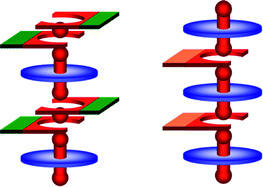Co-crystallization of coordination compounds through second-coordination sphere interactions†
Abstract
The mononuclear complexes belonging to the

* Corresponding authors
a
University of Bucharest, Faculty of Chemistry, Inorganic Chemistry Laboratory, Str. Dumbrava Rosie nr. 23, Bucharest, Romania
E-mail:
madalin.madalan@g.unibuc.ro, marius.andruh@dnt.ro
b CNRS, LCC (Laboratoire de Chimie de Coordination), 205, route de Narbonne, Toulouse, France
c Université de Toulouse, UPS, INPT, LCC, Toulouse, France
The mononuclear complexes belonging to the

 Please wait while we load your content...
Something went wrong. Try again?
Please wait while we load your content...
Something went wrong. Try again?
A. Cucos, A. Ursu, A. M. Madalan, C. Duhayon, J. Sutter and M. Andruh, CrystEngComm, 2011, 13, 3756 DOI: 10.1039/C1CE05112A
To request permission to reproduce material from this article, please go to the Copyright Clearance Center request page.
If you are an author contributing to an RSC publication, you do not need to request permission provided correct acknowledgement is given.
If you are the author of this article, you do not need to request permission to reproduce figures and diagrams provided correct acknowledgement is given. If you want to reproduce the whole article in a third-party publication (excluding your thesis/dissertation for which permission is not required) please go to the Copyright Clearance Center request page.
Read more about how to correctly acknowledge RSC content.
 Fetching data from CrossRef.
Fetching data from CrossRef.
This may take some time to load.
Loading related content
